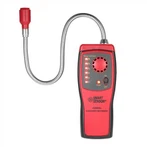Application of carbon dioxide gas detector in large livestock farms
Some large farms, such as cattle, pigs and chickens, are raised in closed or semi closed enclosures. Because of the large number and density of livestock and poultry raised, these animals will exhale a large amount of carbon dioxide. If there is no ventilation in the closed space for a long time, the high concentration of dioxide will lead to hypoxia of animals, resulting in low spirit, fatigue, loss of appetite, slow weight gain, high incidence rate and other symptoms. Meanwhile, poor air circulation can easily lead to the outbreak and spread of diseases. For example, the ventilation system in a pigsty can lead to a series of problems such as reduced precision, decreased feed conversion rate, and respiratory infectious diseases. In recent years, the infection of Mycoplasma suis pneumonia (MPS), porcine reproductive and respiratory syndrome (PRRS), swine atrophic rhinitis, porcine contagious pleuropneumonia (APP), porcine pseudorabies, swine influenza, porcine circovirus (PCV2) and other diseases has increased the incidence rate of porcine respiratory system and aggravated the harm. Difficult to control after onset of illness; The incidence rate is generally 40-50%, and the mortality is 5-30%. However, if the ventilation is too fast and the wind speed is too high in winter, it will also take away the heat inside the pigsty, causing a decrease in room temperature, an increase in pig basal metabolism, and a slowdown in growth; In addition, the ventilation in the pigsty is too fast, and the sudden changes in temperature inside the pigsty can also make the pigs feel uncomfortable. According to relevant professional data, the economic losses caused by ventilation in pig pens have been confirmed to increase feeding costs by 10% to 20%. So the detection of carbon dioxide concentration, temperature, and ventilation rate in the breeding enclosure is very important. Installing carbon dioxide and temperature monitoring devices in the breeding house and connecting them to the fan can monitor the above data at any time. When the concentration of carbon dioxide exceeds the standard, the monitoring device will sound an alarm and start the fan to automatically replace fresh air; Simultaneously monitor the temperature and ventilation rate of the enclosure at any time.





